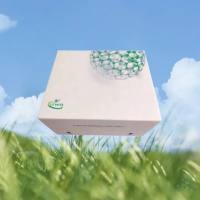Confocal Microscopy of Plant Cells
互联网
584
The increasing availability of confocal microscopy has begun a revolution in plant biology in which microscopy has again become a powerful tool for understanding structure and function. Examples of applications include: three-dimensional (3D) reconstruction of the interphase microtubule array in large vacuolated epidermal cells (1 ); measuring cytoplasmic free calcium changes in whole maize coleoptile segments in response to phototropic and gravitropic stimuli (2 ); and studying symplastic phloem connections in intact Arabidopsis roots (3 ). The major reason for this revolution is the ability to collect clear images in three dimensions due to the lack of image degradation caused by out-of-focus light. Plant cells can attain very large sizes (hundreds of micrometers, in some cases) and are very thick. Thus the ability of the confocal microscope to obtain optical sections of tissues from which 3D reconstructions can be made surpasses the limitations of conventional “wide-field” microscopic techniques where microtome sectioning is often required and cells must be viewed as flat, two-dimensional objects. Furthermore, the reduction in out-of-focus flare increases depth discrimination.









